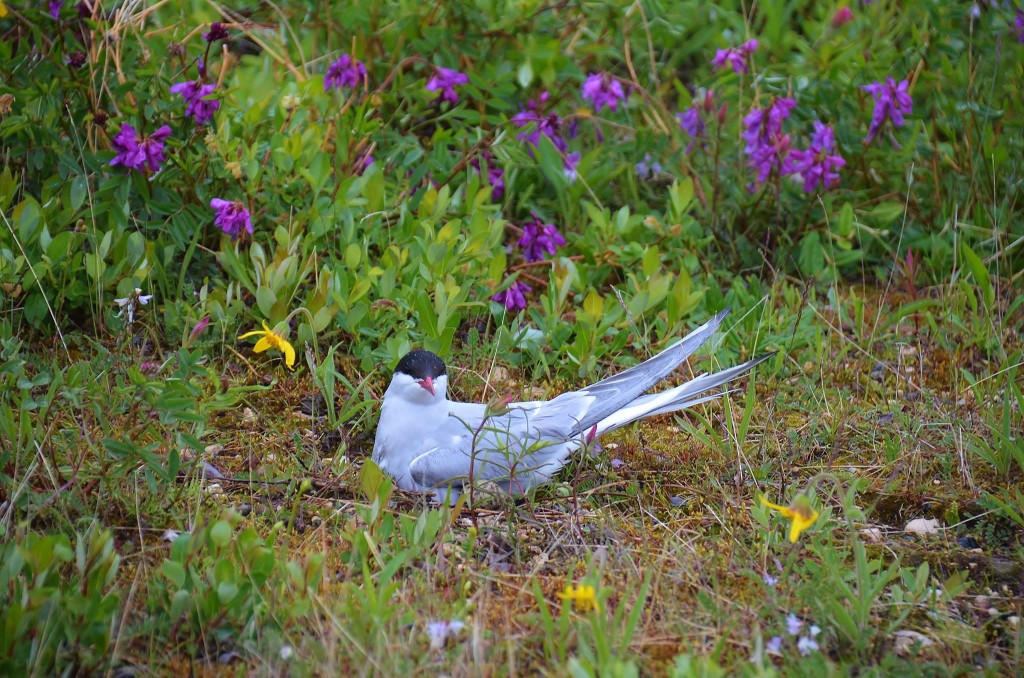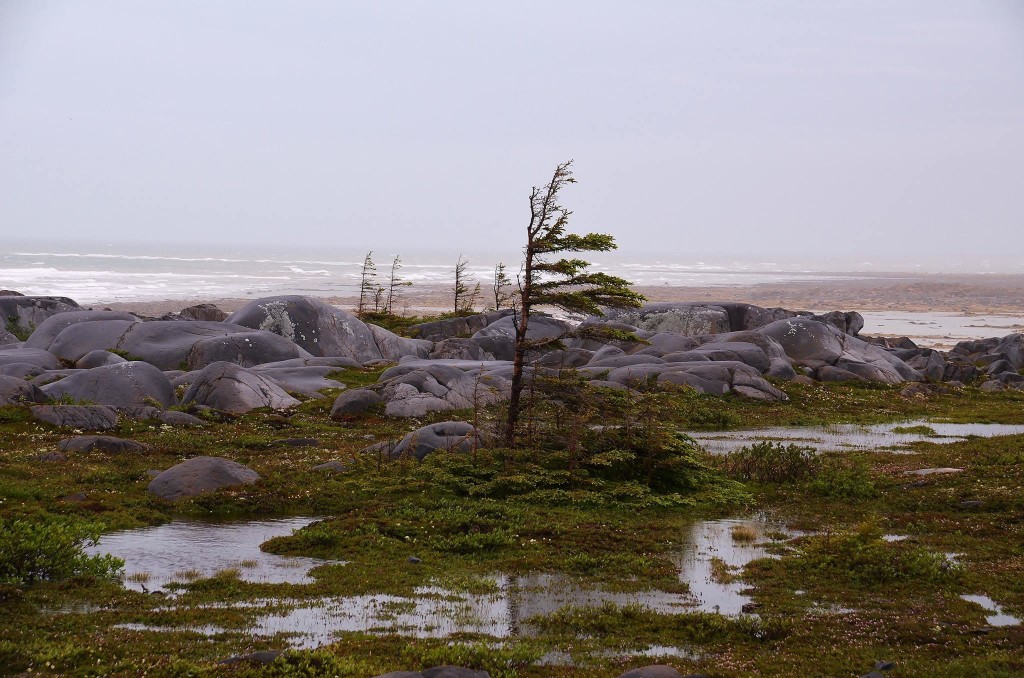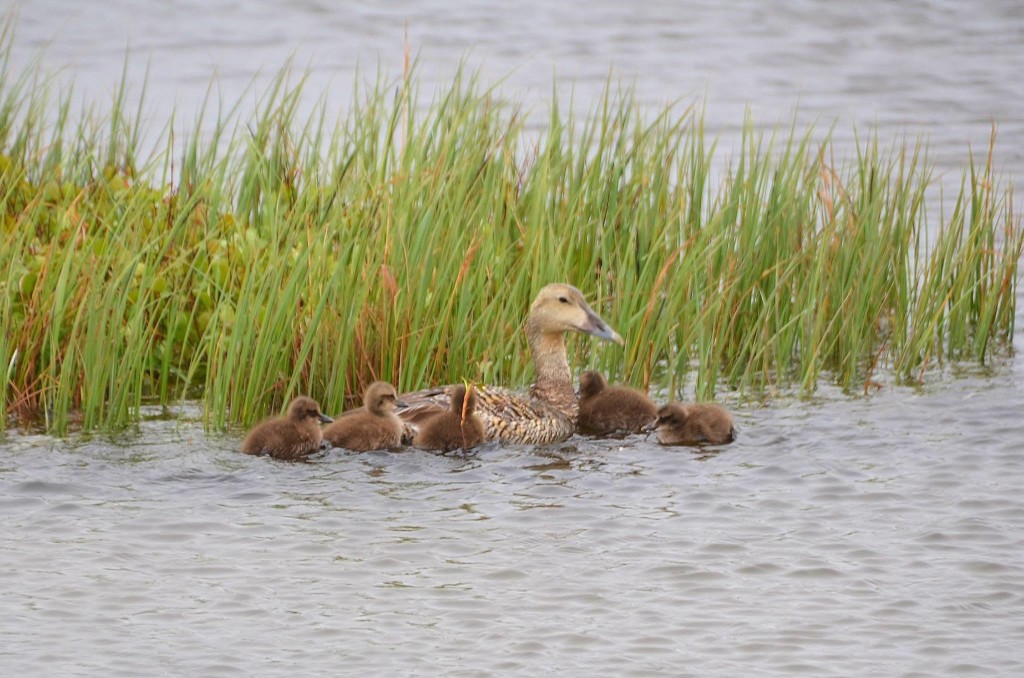by Steve Selden | Dec 5, 2012 | Churchill Photography, Tour News
Another successful season in Churchill is in the history books with travelers safely back home from their amazing adventures and polar bears out on the solid Hudson Bay pack ice hunting seals. Another early freeze-up ended with enough bears to thrill even the last group of avid photographers on a Natural Habitat photography trip. A second wave of bears and a good south wind to keep the ice off shore enabled the season to continue right to the end. Here are some amazing photos from the season….more will be posted through the new year. Also keep an eye out for our new format to the website coming soon. Enjoy!

Peter thrills the group with his drum dance. Colby Brokvist photo.

Polar bear romping in the snow near Churchill. Eric Rock photo

Polar bear up close in November. Colby Brokvist photo.

A red fox climbs on the precambrian sheild near Churchill. Rick Pepin photo.

Aurora from the tundra lodge. Brad Josephs photo.
by Steve Selden | Jul 6, 2015 | Churchill Photography
An overcast day in Churchill provided the perfect setting for some beautiful photographs of the natural surroundings of the region. Birds are nesting and the wildflowers are blooming all over the tundra. Beluga whales are arriving in the Churchill River in pods and we will be posting photos soon from some Natural Habitat Adventures trips in July. Enjoy these Awesome photos!

Arctic tern in a nesting area. Rhonda Reid photo.

This exquisite close – up image of an Arctic Tern incubating eggs on its nest shows just how camouflaged their eggs are. It took me awhile to even see the one egg in front of the tern since it blends so well into the tundra. Arctic terns lay 1 – 3 eggs and both the male and female incubate the eggs for up to 22 days. After birth the parents supply small fish up until they fledge at three to four weeks old. Female and male Arctic terns mate for at least a year and can mate for life. Females lay eggs once a year. Terns live on average up to 34 years.
The photo of the three Arctic tern eggs illustrates the magnificent camouflage adaptation the eggs have developed over many years. The way animals and their eggs adapt to the environment using camouflage is fascinating. Survival of species depends on these slight changes over periods of time. The faster a species can adapt the longer they can survive in nature.

The Precambrian shield rolls down to the Hudson Bay in Churchill. Rhonda Reid photo.

Precambrian shield with a bog and krumholz spruce. Rhonda Reid photo.
These two photos of Precambrian shield rolling toward the Hudson Bay show how the rocks have been smoothed over in previous eras by ice and water covering them. If you look closely you can see marks or “striations” caused from rocks embedded in the bottom of glaciers that were dragged over them during the slow movements of the massive ice formations. It’s quite interesting to search out these striations while hiking over the shield in Churchill.

Eider duck female and her brood of five chicks. Rhonda Reid photo.
by Steve Selden | Apr 21, 2015
Churchill, Manitoba is classified as humid subarctic continental climate with overall cool summers and no dry season. The surrounding area within 25 miles of Churchill is covered by 45% tundra, 44% oceans and seas, 7% shrub-lands and 3% lakes and rivers. All these features have an influence on the year – round weather patterns of the region.
Throughout the year, temperatures normally vary from -22°F to 64°F and rarely fall below-34°F or above 78°F. However, periods of intense cold as well as summertime “heatwaves” often set records for above or below maximum temperatures.
Daily High and Low Temperature
The Churchill “warm season” runs roughly from June 9 to September 14 with an average daily high temperature ranging above 50°F. Typically the hottest day of the year, with an average high of 64°F, is July 27.

Natural Habitat travelers swimming in the Churchill River. Steve Selden photo.
The cold season in Churchill is somewhat longer and lasts from November 30 to March 18 with temperatures averaging below 7°F. The coldest day of the year is January 22, with an average low of -22°F.

Snow sampling at the Churchill Northern Studies Center. Karen Walker photo.
Sun
Sunshine has a distinct effect on the temperatures in Churchill. Daylight hours vary significantly over the course of the year. The shortest day is December 21st with just over six hours of daylight and the longest day is June 20th with just over 18 hours of daylight.

A sun dog behind the inukshuk on the Hudson Bay. Brad Josephs photo.
Wind
With exposure to the north from the expanse of the vast Hudson Bay, Churchill feels the brunt of continuous north winds over the water. Most of these winds produce cooler air as well as snow affects from the moisture in the air. Spruce trees exposed to the tenacious prevailing north winds are prone to krumholz effect. This prevalent condition is caused from freezing, icy winds stunting growth on the exposed side of the trees.

Prevailing north winds create krumholz effect on trees from continuous freezing winds. Rhonda Reid photo.
by Steve Selden | Apr 21, 2015
Precambrian Shield
The Precambrian Shield is an extensive structural unit of the Earth’s crust composed of exposed basement rocks formed during the Archean or Proterozoic eons, which together comprise the Precambrian Era ending approximately 544 million years ago. Originally formed during several rounds of mountain-building activity, Shield rocks are now among the oldest and most stable on Earth. The Precambrian mountain belts have since eroded away, creating the low, rolling rock plain with innumerable lake-filled hollows that we see today. The best-known examples are the Canadian Shield and the Baltic Shield in Scandinavia.

Churchill Summer is spectacular. Steve Selden photo.
The Canadian Shield, which is visible in Churchill, covers over 1.8 million square miles. North to south it extends from the Arctic Archipelago to the states of Wisconsin and New York, and east to west from Labrador to the western Northwest Territories. Repeated advances of glacial ice have scoured its surface and left it strewn with countless lakes, rivers, streams, and ponds–along its edge lie many of the great lakes and waterways of Canada.

Polar Bear on Eskimo Point where the Precambrian shield emerges from the Hudson Bay. Rhonda Reid photo.
The Shield can be divided into a number of structural provinces, each representing a mobile area active during a different part of Precambrian time; the three main provinces are the Superior, the Churchill, and the Grenville. The oldest Precambrian rocks, formed more than 3,000 million years ago, occur as small isolated masses within larger areas of younger rocks. The rocks in these belts are volcanics and sediments, and contain thick banded iron formations, one of the main sources of iron ore in North America; other important mineral deposits include gold, silver, nickel, cobalt, zinc, copper, lead, and uranium.
The Shield has had a profound effect on Canadian history, settlement, and economic development. In pre-European times, it was the home of Algonquian nomadic hunters, who developed the birchbark canoe to travel its myriad waterways. But, the bare rock, thin soils, muskeg, and insects of the Shield have presented a barrier to settlement; the agricultural frontier of the prairie provinces and eastern Canada end abruptly at its perimeter.
In Churchill there is the opportunity to search the Hudson Bay coastal beaches for fossils such as trilobites. These ancient life forms existed during glacial periods and are embedded in the shale found in the bay.

The largest known trilobite was found in Churchill’s Hudson Bay. Manitoba Museum photo.
















